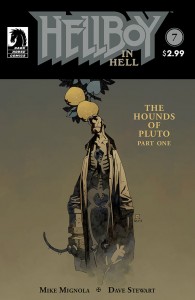
Hellboy in Hell #7
Story & Art: Mike Mignola
Colors: Dave Stewart
Letters: Clem Robins
Cover: Mike Mignola with Dave Stewart
Genre: Horror/Adventure
Publisher: Dark Horse Comics
By Matthew Jent
“I’m already dead. How much worse can I get?”
I bought the first issue of Hellboy solely for the “Monkeyman & O’Brien” backup feature. Up until then, Mike Mignola’s stuff had been like an itch I couldn’t scratch. His Batman was blocky and strange, all torso with skinny little limbs. His X-Force made me impatient for Rob Liefeld’s return. In the Marvel & DC days of Mignola’s work, and in the roughly-pre-high-school days of my life, I just wasn’t picking up what he was putting down.
This is, as they say, a folly of youth.
So in 1994 I picked up Hellboy: Seed of Destruction #1 for two reasons: my completist’s need for that little Legend logo in the top-left, and the much-friendlier-to-my-teenage-eyeballs Art Adams Monkeyman & O’Brien feature advertised in the lower-right.
But with the issue in question in my grubby mitts, I gave Hellboy-proper a what-the-heck read through. That first installment of Monkeyman & O’Brien has some punching ladies, mystery explosions, and a few wonderful-to-behold Adamsian faces, but — from the get-go — Hellboy was dark, strange, bright red, deep black, and a joy to delve into.
What I’m saying is — I was tricked into reading the first issue Hellboy some 20 years ago, and I’ve never been so glad. Two decades later, Monkeyman & O’Brien — heck, pretty much all of the Legend titles minus the occasional Madman revival and the recent Next Men conclusion — are ghosts. But Hellboy remains.
A few years ago Mignola began utilizing Duncan Fegredo, Richard Corben, and others to illustrate the continuing Hellboy stories. Fegredo, Corben and the gang are wonderful artists, but Mignola is iconoclastic in his look and approach. Hellboy is really only Hellboy when Mignola is putting pen to ink, and that includes the okay-I-guess movies by Guillermo del Toro. Since 2012, Mignola has returned to illustrating Hellboy in Hell, the continuing adventures of Hellboy, the seed of destruction and technical anti-christ, in the afterlife.
Hellboy in Hell #7 is the first of a two-part adventure called “The Hounds of Pluto,” and it feels as Hellboy as ever right from the start. The opening caption reads “Somewhere in Hell,” and a ghostly-pale and scrawny-weak Hellboy comes to on a little couch. He’s attended by two strange souls (“We’re doctors,” they assure), who give him a strange drink invoking visions of the post-apocalyptic world he’s left behind.
England is gone, replaced by a new World Tree (“sprung up from your blood”), promising to end this world and replace it with something new. Hellboy speaks with a spirit that may be his friend Alice, but who also appears to be something more. She delivers a prophecy of doom and beauty to Hellboy, who then awakens, and finds himself in Hell with the doctors once more.
And then things start to get weird.
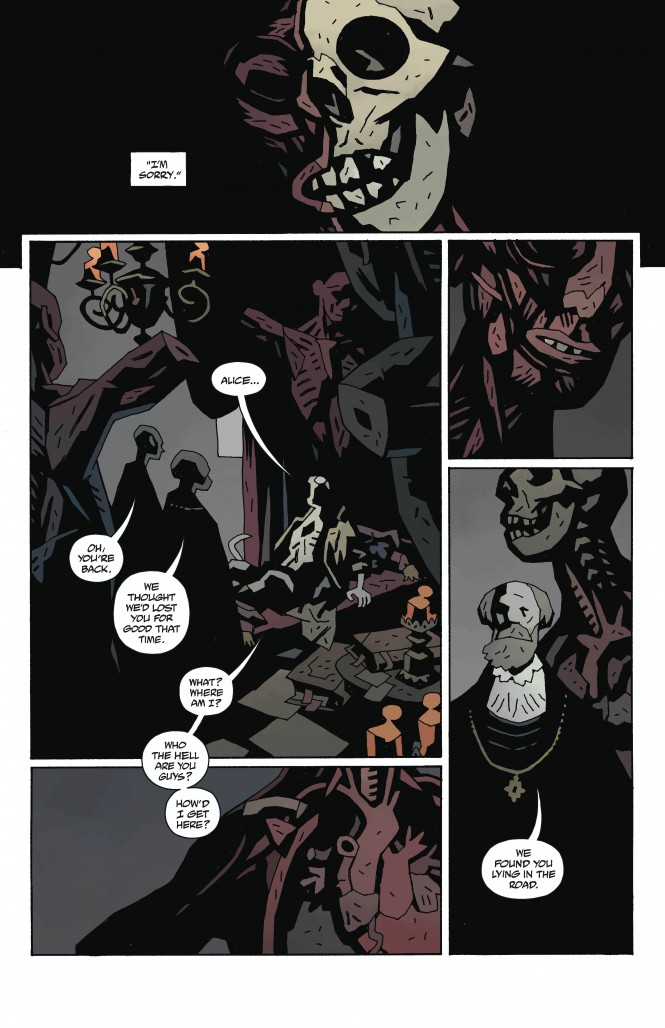
Gestural! That is precisely the word. It’s not that the art is barebones, but Mignola’s lines seem to lean into each other, curving to support themselves and the work. 20 years ago, Hellboy’s world felt anchored — in the sense that is was being pulled down to some primordial, Lovecraftian doom — but now, with the world ended, everything feels unmoored and strange. Mignola’s architecture is leaning and curved, bowed from pressure but not unsteady. It almost feels like we’re underwater.
Dave Stewart’s colors float through and infuse this otherworldly realm. The World Tree is a green that could be both a sickly pallor and the hope of a new spring. Back in Seed of Destruction, the red of Hellboy’s skin popped out of the drape-heavy blacks, but here the panels are lived-in with subtle color — strange gray smoke in the distance, the maroon of muscle and heart, orange backgrounds that indicate fury and danger. Dave Stewart is killing it here, gang. Stewart gets equal billing on the cover with Mignola, and for good reason. If this were Ancient Egypt, Mignola + Stewart would be entombed together for all time when one of them died.
Something Hellboy doesn’t always get credit for, but which is on fine display here, is that the dialogue is good. It’s funny and the rhythm is pleasing and strange. My favorite exchange begins, “Doctor, do we like the word soul?”
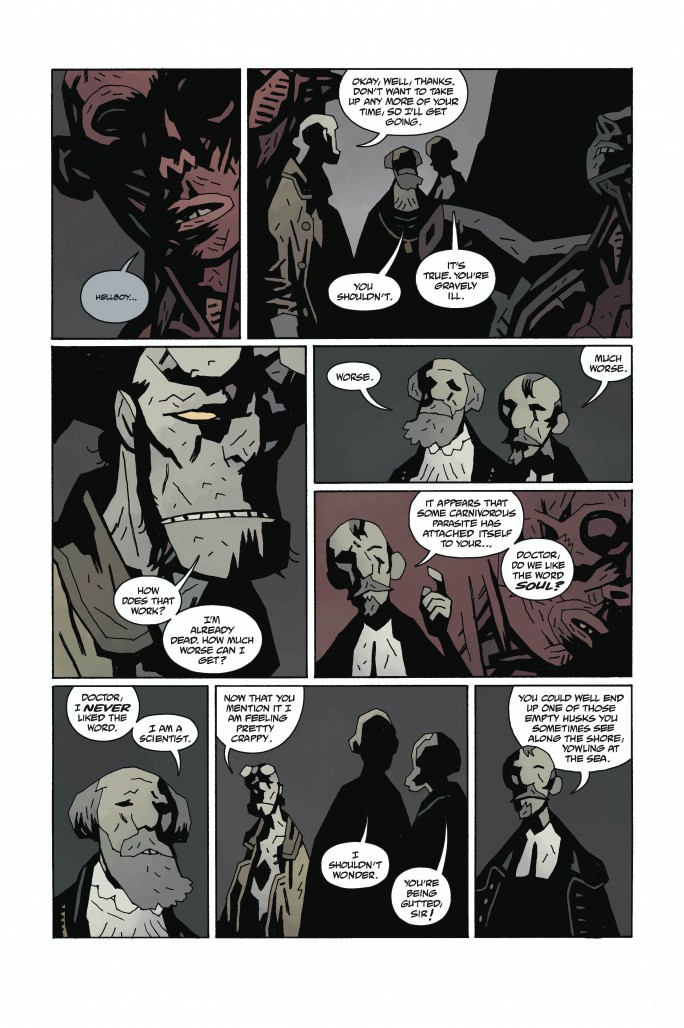
Hellboy in Hell has the momentum of the tide, assured of its movements even if we do not yet know where we are being pulled. Mignola has stated that the end of Hellboy’s story is in sight, so my advice to you? Take every opportunity to drift in the tide. Hellboy knows not where he’s going, but Mignola + Stewart will provide.
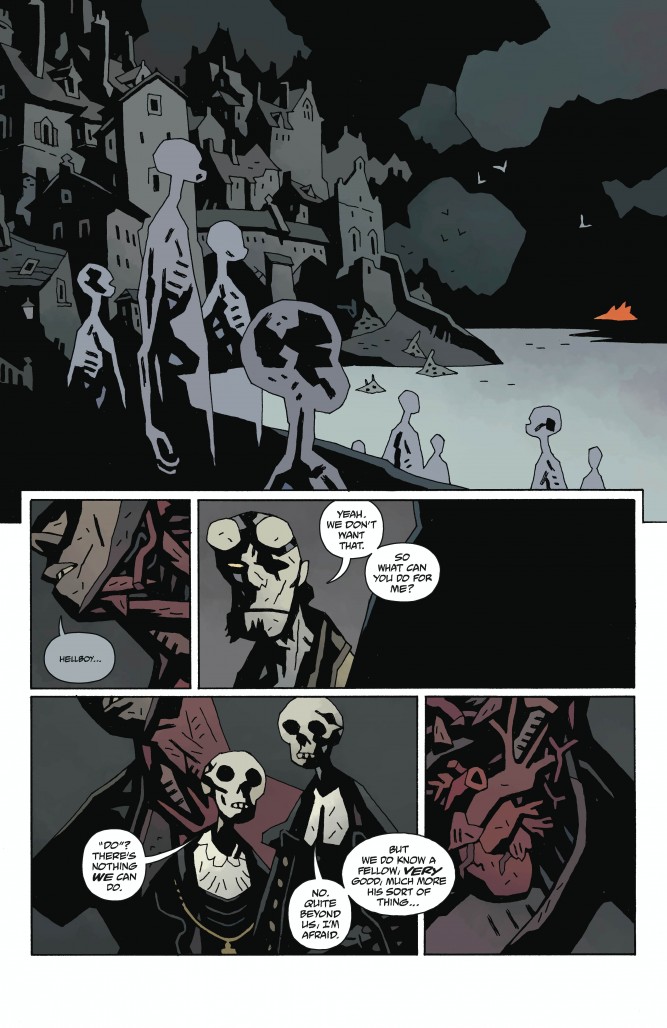


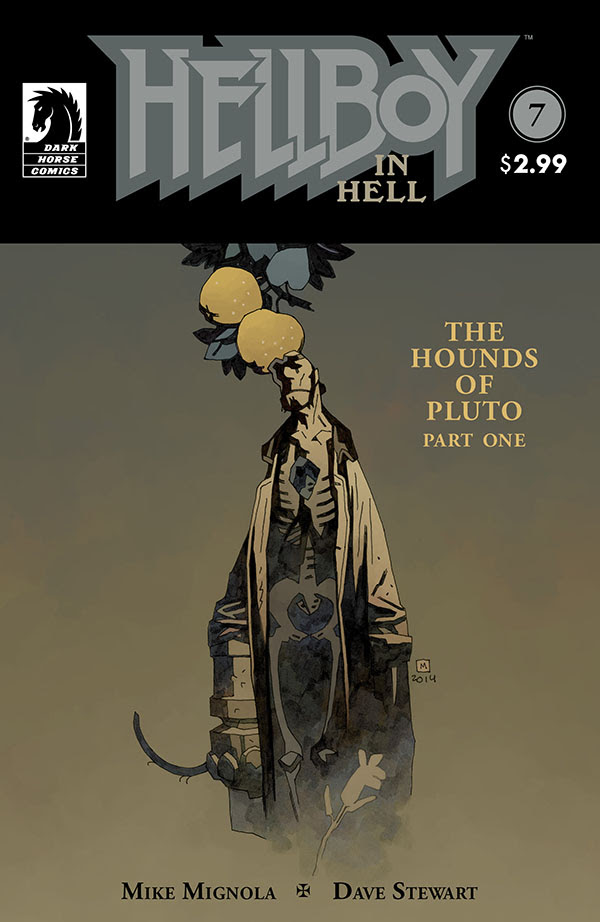


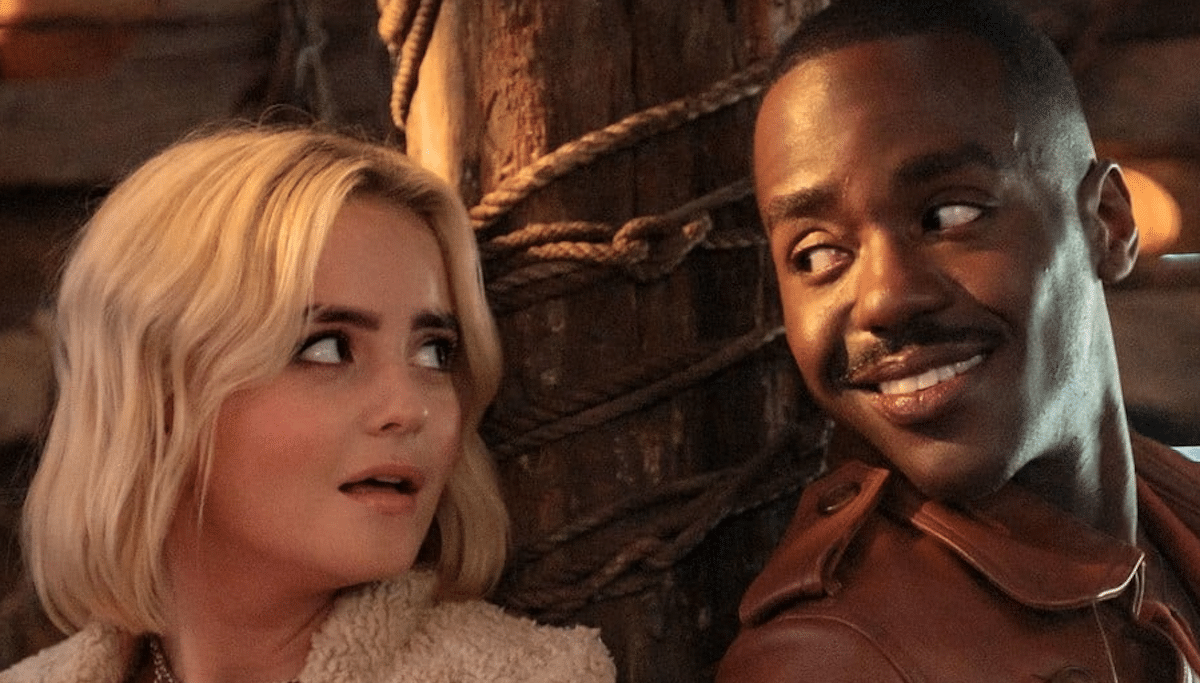


Gestural for sure. The man is definitely among the greatest comic book artists of all time.
Whoever on Beat staff wrote this matched my sentiments on Hellboy exactly. All the way down to “I read it for Monkeyman and O’Brien”. And where the hell is Art Adams anyway?
Comments are closed.